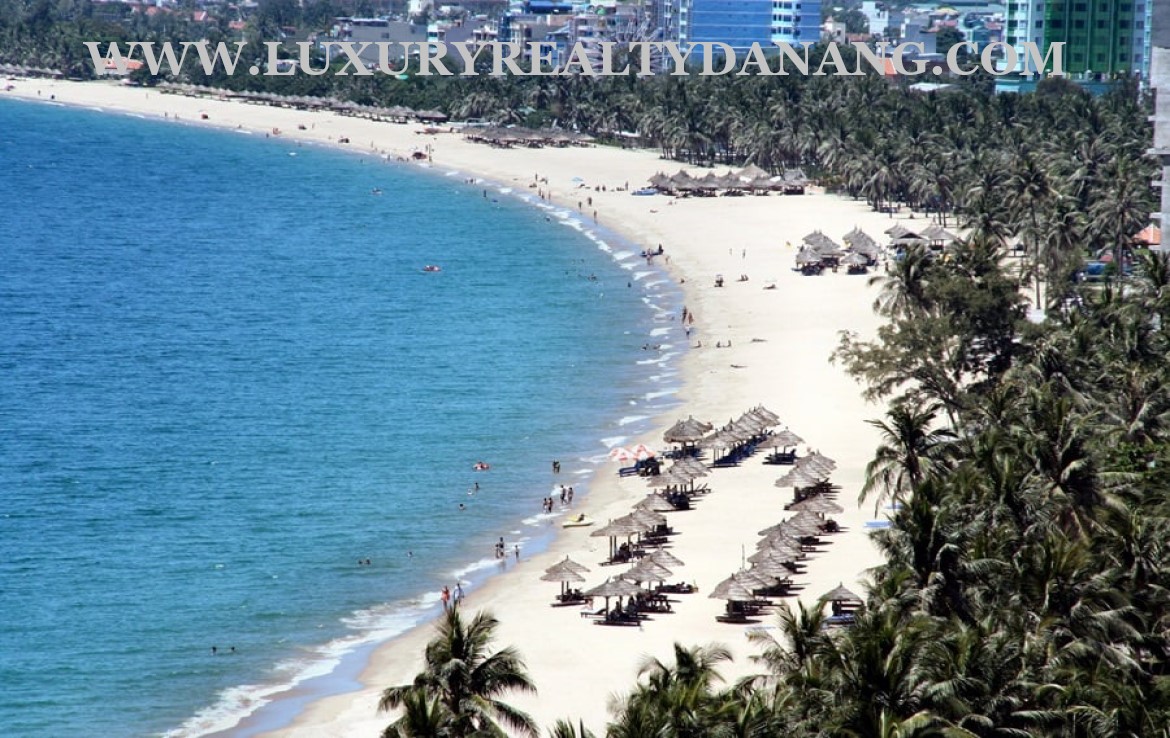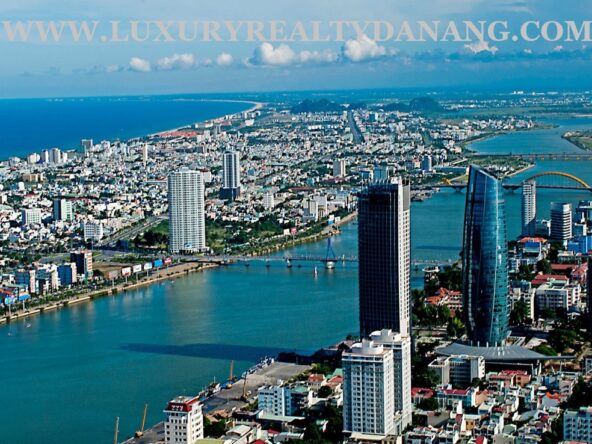1. Da Nang has been recognized as a Vietnam Smart City for the 4th consecutive time.
The city of Da Nang in Vietnam has been awarded the Smart City Award Vietnam for the fourth consecutive year, according to a report by Voice of Vietnam (VOV), reflecting its ongoing dedication to innovation, technology, and sustainable development.
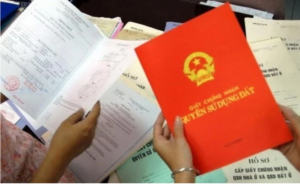
Da Nang has introduced various smart city initiatives, including investments in high-tech infrastructure like traffic management systems, energy-efficient buildings, and smart waste bins. It is also committed to sustainable development by creating green spaces, promoting renewable energy, and reducing waste.
These efforts support economic growth in sectors like tourism, manufacturing, and services while ensuring affordable housing for residents. These initiatives are expected to make Da Nang an increasingly attractive destination for both investors and residents in the long term.
Furthermore, the news highlights the positive impact these smart city initiatives will likely have on the real estate market in Da Nang. Improved infrastructure, sustainable development, economic growth, and affordable housing are all expected to drive real estate demand in the city in the years ahead.
2. Proposal for Foreigners Buying Resort Real Estate.
Ms. Nguyen Thai Hoai Anh of Sun Group proposed changes in Vietnam’s real estate sector at a November 15 tourism conference. She advocated lifting restrictions on foreigners, allowing them to invest in tourism and resort properties to boost the economy and tourism. Ms. Hoai Anh urged policies encouraging foreign investment in resort real estate, emphasizing potential economic benefits.
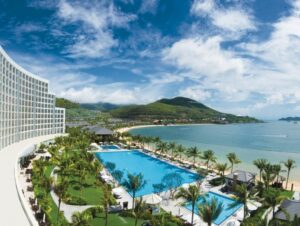
She also recommended expanding visa exemptions for citizens of developed countries, promoting long-term stays and increased spending. To enhance aviation cooperation, Ms. Hoai Anh suggested market expansion, new flight routes, and reinstating direct flights, particularly targeting countries like South Korea, China, India, Australia, and Eastern Europe.
Despite government efforts to revive the real estate market, challenges persist, with increased business closures, especially in the first 10 months of the year. Forecasts by Mr. Nguyen Van Dinh of the Vietnam Real Estate Association predict ongoing departures due to prolonged challenges.
The Ministry of Planning and Investment reported on the Song Cong 2 Industrial Park Phase 2 project in Thai Nguyen province, with Viglacera Thai Nguyen as the investor. The report emphasized compliance conditions. Additionally, Gamuda Land Vietnam identified a land fund in Ho Chi Minh City for a significant project, anticipating over 1 billion USD in revenue upon completion. The company strategically acquired Tam Luc Real Estate earlier to expand its land portfolio and minimize planning and legal risks.
Source: kinhtexaydung.petrotimes.vn
3. Vietnam’s Industrial Real Estate Attracts Foreign Investors, With China Leading the Pack
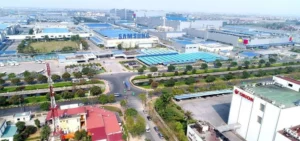
The Vietnamese industrial real estate sector is attracting foreign investors due to its diverse supply and competitive labor costs. China consistently ranks among the top five countries with the highest investments in Vietnam, investing $2.92 billion in the first nine months of 2023, making it the second-largest investor after Singapore. Chinese investors, particularly interested in electronics and solar energy production, are drawn to Vietnam’s proximity, favorable logistics, and competitive production costs. Currently, China ranks as Vietnam’s largest trading partner, with a total trade volume of $175.6 billion in 2022. The industrial real estate market in Vietnam is evolving with increased investor interest, diverse product offerings, and more flexible land leasing options. Notably, the government’s continued investment in infrastructure and skill development is crucial for enhancing productivity and efficiency in the Vietnamese workforce.
Source: cafef.vn
4. Vietnam will be among world’s 20 fastest growing economies in 2024.
In its recent World Economic Outlook report, the IMF projected that global growth will slow from 3.5 percent in 2022 to 3 percent this year and 2.9 percent next year, a 0.1 percentage point downgrade for 2024 from its July projections.

The IMF maintained its growth forecast for Viet Nam’s economy in 2023 at 4.7 percent. Viet Nam’s GDP growth accelerated to 5.33 percent in the July-September period compared to 3.28 percent and 4.05 percent respectively in the first and second quarter.
It is quite a stronger pickup, noted Thomas Helbling, Deputy Director of the Asia and Pacific Department, under the IMF. “We are seeing a gradual recovery in the real estate and corporate bond market easing. The view is that with the reforms being undertaken, some of those short-term headwinds will be overcome,” shared the economist. And in the medium term, Viet Nam has a strong kind of trajectory based on integration of value chains, foreign direct investment (FDI) as those fundamentals remain fairly strong, he underscored.
If Viet Nam overcomes some of these macro imbalances right now, the nation would go back very close to the pre-pandemic trajectory, he added.
Source: vietnamplus.vn
5. Da Nang Transforms an Industrial Zone into An Don International Financial District
In a significant development, Da Nang, is undergoing a transformation as it converts an existing industrial zone into a thriving international financial district called An Don. This ambitious project aims to create a modern urban center, positioning Da Nang as a new economic hub.The decision to convert the Da Nang Industrial Zone into An Don International Financial District was approved as part of the city’s long-term planning until 2030. This strategic move aligns with the government’s vision to develop Da Nang as a high-tech industrial and supportive industry hub.As part of the industrial development, Da Nang will establish additional industrial zones and clusters. The existing Da Nang Industrial Zone will be transformed into An Don International Financial District, serving as a modern urban center and the city’s new economic focal point.To facilitate industrial expansion, Da Nang has devised a relocation plan for the current industrial zone. With 42 active businesses under the ownership of Massda Land Co., the local authorities are in the process of relocating factories and warehouses to new premises.
The Son Tra district, where the industrial zone is located, holds significant potential for tourism development and has a dense population. Transforming the industrial zone into a financial district near the city center will greatly impact the quality of life for residents. This conversion aligns with the realities and future development direction of Da Nang.Apart from the transformation of Da Nang Industrial Zone, the Hoa Khanh Industrial Zone will also be converted into an ecological industrial model. Additionally, three new industrial zones will be established: Hoa Cam (phase 2), Hoa Nhon, and Hoa Ninh, covering a total area of approximately 880 hectares.The conversion of Da Nang’s industrial zone into An Don International Financial District signifies a major step towards economic growth and urban development. This transformation aligns with the city’s vision of becoming a prominent high-tech industrial and financial center in Vietnam. By repurposing the industrial zone, Da Nang aims to enhance its economic landscape and create a modern urban environment.
Source: von.vn
6. Construction of North-South high-speed railway to kick-off by 2030.
Vietnam is embarking on an ambitious railway development plan, following the government’s Action Program under Resolution No. 178/NQ-CP. By 2030, with a vision for 2045, the construction of the North-South high-speed railway is set to begin, with an anticipated completion date of 2045. The project, with a total investment estimated at around $58.71 billion, will comprise two initial sections: Hanoi to Vinh (281 km) and Ho Chi Minh City to Nha Trang (370 km). The entire North-South high-speed railway will span 1,545 km and have a speed limit of approximately 320 kph.
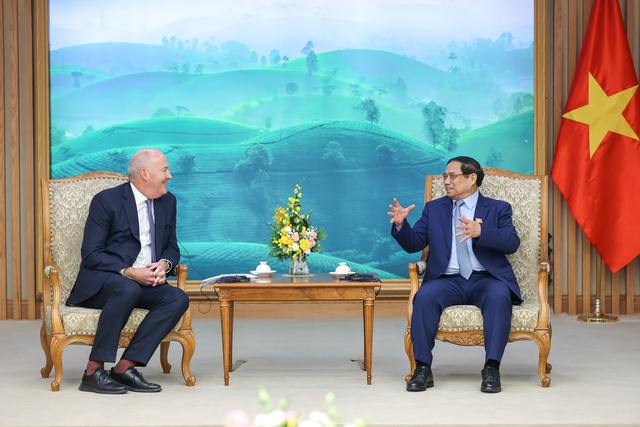
The Action Program also encompasses the development of new or upgraded railway lines throughout the country, including northern routes linking Hanoi to Hai Phong, Lai Cai, Lang Son, and Vung Ang (Ha Tinh province) to Tan Ap and Mu Gia (Quang Binh province). In the south, connections from Ho Chi Minh City to Can Tho, Thu Thiem (Ho Chi Minh City) to Long Thanh (Dong Nai province), and Bien Hoa (Dong Nai province) to Vung Tau (Ba Ria-Vung Tau province) are planned for initiation by 2030. The Yen Vien (Hanoi) – Pha Lai – Ha Long – Cai Lan (Quang Ninh province) link will also be completed by 2030. Additionally, the Action Program sets the goal of having 50% of the total length of projected urban metro lines in Hanoi and Ho Chi Minh City operational by 2030 and fully completed by 2035. Vietnam’s infrastructure upgrades aim to enhance connectivity and unlock the economic potential of the entire nation.
Source: baochinhphu.vn
As always, HOUSE IN DANANG is at your service and happy to provide help anyways we can!

